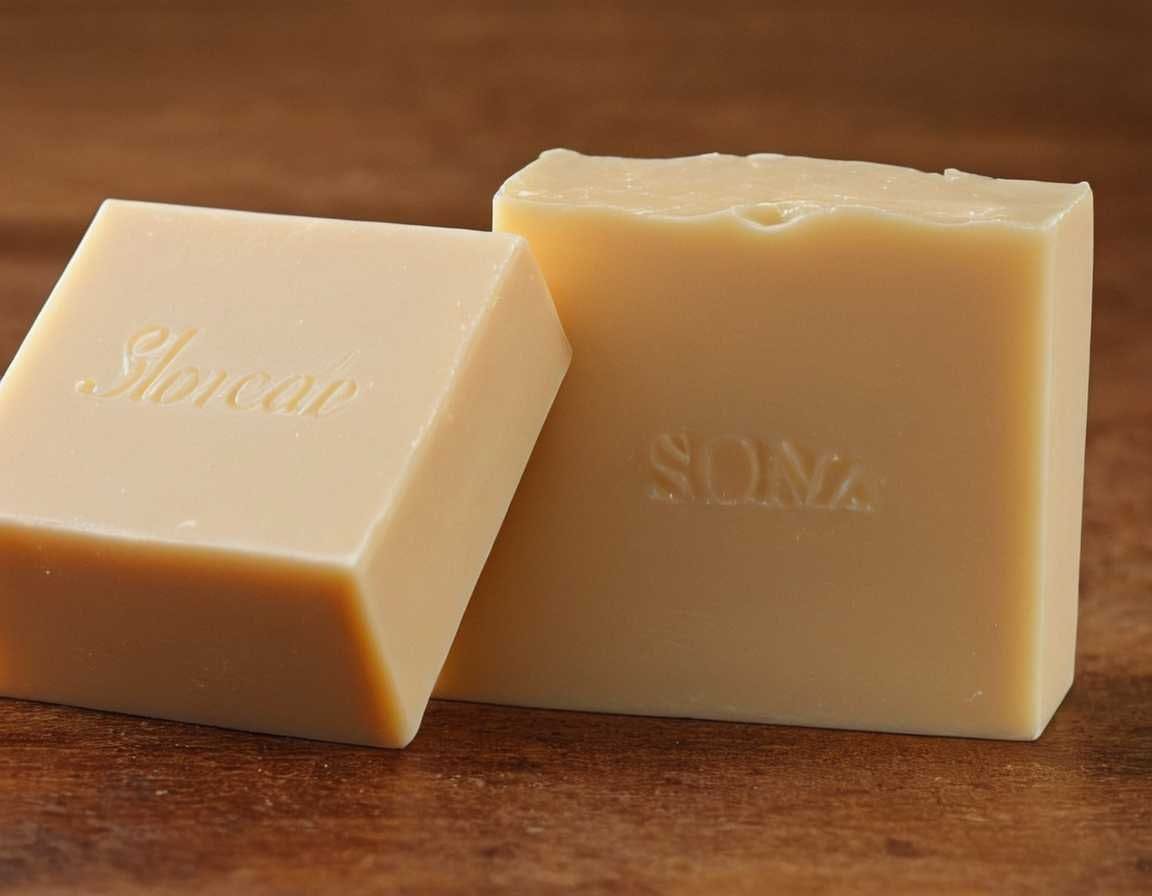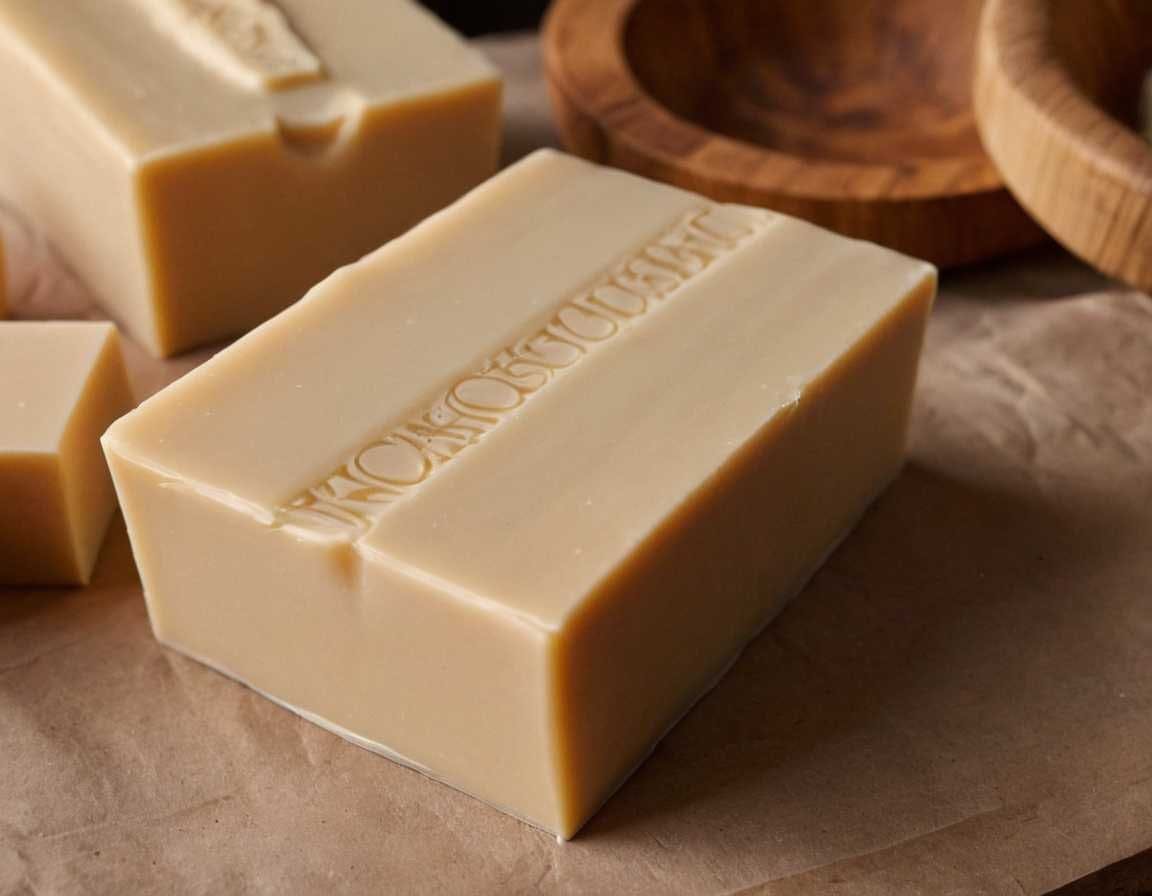Crafting Your Own Goat Milk Soap: A Soothing Delight for Skin
The Benefits of Homemade Goat Milk Soap:
Goat milk soap has recently surged in popularity for its soothing, nourishing properties. Blending the gentle care of goat milk with traditional soap making, goat milk soap offers cleansing power plus skin-loving moisture and nutrients.
Crafting goat milk soap at home lets you control the ingredients while reaping all the benefits of goat’s milk. From softening and hydrating to easing skin irritations, homemade goat milk soap makes a thoughtful, homemade gift or self-care treat.
Understanding the Magic of Goat Milk Soap:
If you're looking to indulge in a nurturing skincare experience, consider making your own goat milk soap. The process is both fulfilling and rewarding, offering a natural way to cleanse and pamper your skin. Goat milk soap isn’t just another skincare trend; it's a time-honored remedy that's been cherished for centuries.
Goat milk soap isn’t just about bubbles and fragrance; it’s a powerhouse of goodness for your skin. Rich in vitamins, minerals, and alpha-hydroxy acids, it’s a natural exfoliant that gently removes dead skin cells, leaving behind a smoother and softer complexion. Its creamy lather is exceptionally moisturizing, making it a go-to for those with dry or sensitive skin. Moreover, the natural fats in goat milk help maintain the skin’s moisture balance, reducing the chances of irritation or dryness.
Goat Milk Soap for Babies: Gentle Care for Delicate Skin
Babies possess the most delicate skin, and goat milk soap is a blessing for their tender epidermis. Its mild and nourishing properties make it ideal for baby skincare routines. Unlike harsh chemicals found in commercial soaps, goat milk soap is gentle and doesn’t strip the skin of its natural oils, reducing the risk of irritation or allergic reactions. It’s a natural choice for parents who prioritize gentle care for their little ones.
Goat's Milk vs. Shea Butter Soap: Understanding the Differences
While both goat milk and shea butter soaps offer fantastic benefits, they cater to different skin needs. Goat milk soap is celebrated for its moisturizing and exfoliating properties, making it perfect for dry or sensitive skin. On the other hand, shea butter soap is renowned for its intense hydration, making it a top choice for those with extremely dry skin or specific skin conditions.
Getting Started with DIY Goat Milk Soap
Making goat milk soap requires just a few key ingredients and some simple equipment. As you advance, you can experiment with different oils, colors, scents, and designs - but here is an easy beginner goat milk soap recipe to start out:
Ingredients
- 8 oz frozen goat milk
- 5.5 oz lye (Sodium Hydroxide)
- 2.25 oz sweet almond oil
- 13.5 oz coconut oil
- 13.5 oz olive oil
Equipment
- Digital scale
- Thermometer
- Stainless steel or glass bowl
- Stick blender
- Soap mold
- Spatula
Safety Tips
Always exercise caution when making goat milk soap from scratch:
- Work in a well-ventilated area
- Wear gloves and eye protection
- Avoid direct contact between lye and skin/eyes
Step 1: Prepare the Goat Milk
Place your frozen goat milk in a bowl in an ice bath to prevent early overheating. Thawed or fresh goat milk may also be used.
Step 2: Mix the Lye
In your stainless steel or glass bowl, carefully mix the lye into an equal amount of cold distilled water, stirring continuously. Place this lye solution in the ice bath too. Allow both mixtures to cool to around 90°F.
Step 3: Combine and Blend
When cooled, slowly add the lye solution to the goat milk, blending continuously with your stick blender. Continue blending until the mixture reaches “trace” and becomes thick like cake batter. This helps the butters fully incorporate.
Step 4: Add and Mix Oils
Still blending, carefully stream your melted oils into the traced goat milk mixture. The batter will begin to thicken further. Blend for 5-10 minutes until it thickens to about pudding consistency.
Step 5: Scent and Color (Optional)
At a lighter trace, you can stir in goat milk soap colorants and gentle essential oils or fragrances like lavender, peppermint, tea tree, or sweet orange. Use sparingly to allow the goat milk’s natural scent to shine.
Step 6: Pour into Molds
Finally, carefully pour your finished goat milk soap batter into your soap molds. Allow the soap 24-48 hours to fully set undisturbed. Cut into bars and allow to cure in a cool dark place for 4-6 weeks.
Tips for Making Goat Milk Soap Successfully
- Always run all ingredients and equipment through a lye calculator before starting. This ensures the proper chemical reaction.
- Work carefully to fully incorporate the lye and oils without heating excessively. Goat milk soap can “seize” if overheated. Gentle blending helps build proper trace.
- Use pure oils. Impure oils or butter can inhibit lathering or curing in goat milk soap.
- Allow adequate cure time. This helps eliminate excess moisture and results in a harder bar that lasts.
- Start simple. As you gain experience, add colors, scents, and fun shapes!
The Soothing Benefits of Goat Milk Soap:
Gentle enough for sensitive skin, properly homemade goat milk soap offers outstanding skincare benefits. Goat milk’s rich proteins, amino acids, and triglycerides moisturize and soothe skin naturally. The natural exfoliating properties of homemade soap pair with the deep hydration of goat milk for clean, smooth skin without irritation. Meanwhile, goat milk’s vitamin A nourishes skin cell regeneration and overall skin health. No wonder homemade goat milk soap makes such a thoughtful gift!
Goat Milk Soap for Babies:
With proper blending of fats and lye, goat milk soap is gentle enough even for babies. Allow homemade goat milk soap bars a full 4-6 week cure before gifting or using for infants. Avoid additional fragrances or major shaping that might irritate a baby’s delicate skin. Gentle goat milk soap without harsh chemicals can help nurture healthy skin right from the start.
Babies possess the most delicate skin, and goat milk soap is a blessing for their tender epidermis. Its mild and nourishing properties make it ideal for baby skincare routines. Unlike harsh chemicals found in commercial soaps, goat milk soap is gentle and doesn’t strip the skin of its natural oils, reducing the risk of irritation or allergic reactions. It’s a natural choice for parents who prioritize gentle care for their little ones.
Goat Milk vs. Shea Butter Soap:

Both goat milk and shea butter offer skin-soothing natural care...but goat milk often edges out shea for its rich nourishing qualities. Goat milk soap tends to create a rich, creamy lather that penetrates deeply to hydrate skin. The natural exfoliants in goat milk also refresh skin by removing dull cells. Shea butter certainly moisturizes excellently, but some find it leaves more residual heaviness. Ultimately, they make a perfect pair in the same bar! For total skin care, a homemade soap that blends goat milk with shea butter, cocoa, and mango butter makes an extra-nourishing treat.
While both goat milk and shea butter soaps offer fantastic benefits, they cater to different skin needs. Goat milk soap is celebrated for its moisturizing and exfoliating properties, making it perfect for dry or sensitive skin. On the other hand, shea butter soap is renowned for its intense hydration, making it a top choice for those with extremely dry skin or specific skin conditions.
Where to Buy Goat Milk Soap:
Looking to skip DIY and buy ready-made goat milk soap? Many small farmers offer handcrafted goat milk soaps at local markets and online. For a truly farm-to-bath treat, buy directly from a local goat farm in your area. Goat milk soaps also appear at natural grocers like Whole Foods, though ingredients vary. Comparison shop for non-GMO oils, enough cure time, farmer connections, and a range of shapes or scents to suit your taste.
If you're short on time or prefer ready-made options, there are numerous places to purchase high-quality goat milk soap. Local artisanal shops, farmers' markets, and online retailers offer a wide selection of goat milk soaps. Ensure they use natural ingredients and sustainable practices for the best results.
Crafting your own goat milk soap is a delightful journey that culminates in a skin-nourishing treasure. Its benefits, especially for sensitive skin and babies, are unmatched. While goat milk soap stands tall among skincare options, understanding its differences from shea butter soap helps tailor your skincare routine to your specific needs. Whether you choose to craft it at home or purchase it, embracing the magic of goat milk soap is a step towards healthier, happier skin.
About Inaya Grace
Inaya cultivates a green and delicious life. Join for plant-based inspiration, creative crafts, eco-friendly tips, and a positive community

